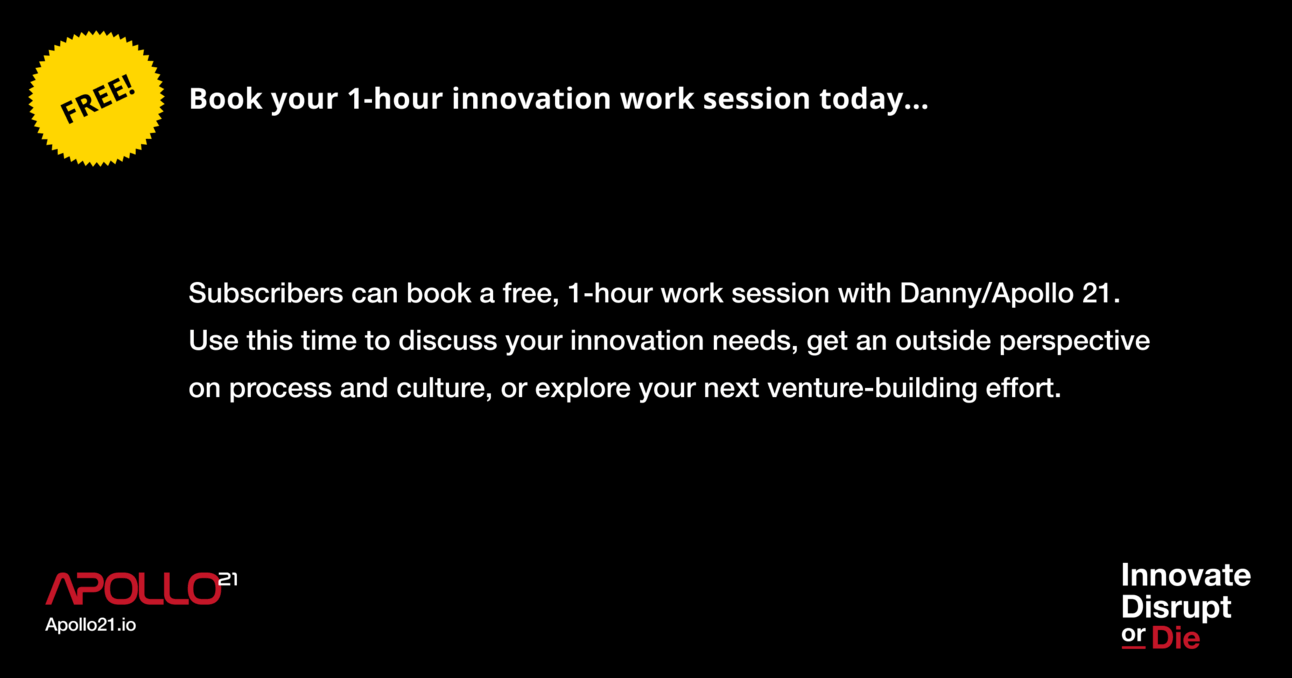
You’re Not the Problem. The System Is.
Innovation Isn’t Broken. The Incentives Are.
You’re told to act like a founder. But you’re measured like a project manager.
You already know how this ends. You build. You test. You prove it works. And still, they shelve it, spin it, or hand it off to someone else.
You’ve seen it happen. A project takes off only to get re-org’d to death. A colleague builds something new, then watches someone else get promoted based on the success.
You’re not imagining the pattern. Culture is what gets rewarded. And in most orgs, risk is punished, even if the language says otherwise.
You've probably already realized: the system isn’t neutral.
The system isn’t ignoring innovation. It’s actively rejecting it.
The reality is that incentives signal what really matters. And if predictability, optics, and short-term wins are what get rewarded, then that’s what survives.
Not learning. Not bets. And not you, the innovator.

How to Survive a Difficult System
Create a Safe Zone for Failure
As an innovator, you can’t wait for the system to make failure safe. You have to figure out how to survive it, strategically. Here’s how:
Design bets that expose risk early.
Don’t pitch the big vision first. Lead with the sharp question: “What would kill this idea fastest?” Then build around answering that. When you show you’re not wasting resources—you’re testing the riskiest assumptions—you take away their excuse to shut it down.
Control the narrative before the results.
Frame the work in terms of learning velocity, not outcomes. Call it a test. Define success as “deciding what not to build.” The more clarity you provide upfront, the less room they have to reframe it as failure later.
Socialize learnings, not wins.
Create artifacts (internal memos, debriefs, backchannels) that highlight what was discovered. Make it public. Let others see the rigor, not just the result. If people only ever see the launch or the silence, they assume failure means incompetence. Change that pattern.
Keep a kill list.
When something doesn’t hold up to pressure, write it down. Make it visible. Treat those killed ideas as strategic moves, not losses. The more you normalize saying “no” to weak ideas, the more cover you give yourself—and others—for not forcing something that doesn’t deserve to scale.
You may not be able to remove the risk entirely. But you can make the upside of clarity more visible than the downside of failure.
That’s how you survive long enough to try again.

Create space to move.
Create Space to Move
You’re building inside a machine designed to protect what already works. That machine will slow you down, not out of malice, but by design. Everything about it is tuned for predictability: governance, compliance, approvals, process.
You can’t change that overnight. But you can change how your work is perceived. Here’s how:
Reframe the work.
Call your work 'early-stage,' 'exploratory,' or 'non-launch-impacting.' Say you're testing signal, not deploying product. Use language that mitigates any perceived risk so folks don’t question too deeply.
Decouple from the roadmap.
Don’t let your project get tangled in delivery timelines or quarterly targets. Make it clear this work runs adjacent, not inside, the core planning structure.
Avoid friction points.
If you know legal, brand, or compliance will slow you down, structure your work so it doesn’t trigger their involvement early. Don’t seek approval until you’ve got something defensible
Position your work as something that lives outside the critical path. Not because it is, but because it needs to appear that way to survive. We’re not advocating for deception. We’re aiming to create space to learn before the system notices.
Staff for Discovery, Not Delivery
If you want to move like a startup inside a corporate behemoth, you can’t wait for headcount. You build your team from those around you.
Find the builders.
Look for the person who prototypes without a ticket, the one who drafts before they ask, the one who can take a fuzzy idea and get it into users’ hands in hours—not weeks.
Set the right frame.
Don’t act like you’re running a product team if what you’re doing is discovery. Make that distinction clear. Say it out loud. You’re not building for delivery—you’re building to learn.
Rescope when needed.
If your team is stuck or resisting, shrink the surface area of the work. Recast it as a test. Focus on the thing you can learn this week, not the thing you’re supposed to ship this quarter.
You don’t need scale. You need search.
And you don’t need permission to start. You need allies who move.
Don’t Mistake Visibility for Support
Just because your work is visible doesn’t mean it’s valued.
Approval for the pilot project.
A shout-out at the most recent off-site.
Your name dropped in a company-wide email.
None of that represents backing or buy-in. It’s all optics. Here’s how to tell the difference and what to do about it:
Track what comes next.
After the applause, did you get budget? A clear next phase? The authority to move? If not, that recognition was decoration, not endorsement.
Push for specifics.
When you’re being praised, turn the moment. Ask: "Can we carve out a budget for this next step? Can I lead the next iteration?" Use the visibility as a lever to get something concrete in the moment.
Document the gap.
If your project gets highlighted but not resourced, make that visible. Quietly. Factually. Let the disconnect speak for itself. Send it upward and across the org.
If all you get is recognition without support, it’s not a vote of confidence. It’s a signal to rethink who’s really on your side.
Make the Upside Real
In a startup, the upside is obvious: control, an exit, and perhaps a financial windfall.
You ship something that works? You lead the next thing. You make something real? You earn yourself more autonomy, more resources, more weight behind your judgment and reputation.
Corporate innovation doesn’t work that way. You can build the thing, prove the thing, and still watch someone else get tapped to lead the follow-up. That’s not just disheartening, it’s enlightening.
You probably won’t get equity. You might not even get a title bump. But you can still stack leverage. Here's how:
Define your ask before you need it.
Decide ahead of time what upside looks like for you. Ownership? Budget? A new mandate? Make it specific. If you wait until after the win, it’s already too late.
Link outcomes to your leadership.
Don’t assume people will connect the dots. Spell it out: what you led, what changed, what unlocked. Show how your judgment and your actions moved the work forward.
Use momentum as negotiation.
When something works, use that traction to ask for what comes next. "We proved this out. Here’s what we need to build the next piece." Don’t just share the win. Convert it.
If none of that’s on the table, you’re not being rewarded. You’re being strip mined.
Make your value obvious. Document your impact. Show what changed. Show what was avoided. Connect the dots for the people who won’t bother to do so for you.
And then use that leverage to claim more control. Not credit…control.
Because if the best outcome of your work is someone else’s promotion, you’re not part of the strategy. You’re just a line item on someone else’s win column.
You’ve Seen the Playbook. Now Move Intentionally
You’re not underperforming. You’re playing in a game that wasn’t designed for the kinds of bets you’re trying to place.
A game where predictability beats potential. Where shipping something safe gets more praise than proving something bold. Where the scoreboard rewards optics over outcomes.
But now you see it.
You know how to protect your work. How to shape perception. How to build room to move, even when the system pushes back.
So use it. Not to play small. But to stay sharp.
Stop giving your best thinking away for free. Stop confusing applause with support. Stop hoping someone else will make space for the work to matter.
You don’t need the system to get better.
You just need to stop letting it waste your best bets.
The White Paper
Click here to download our white paper.
Download


